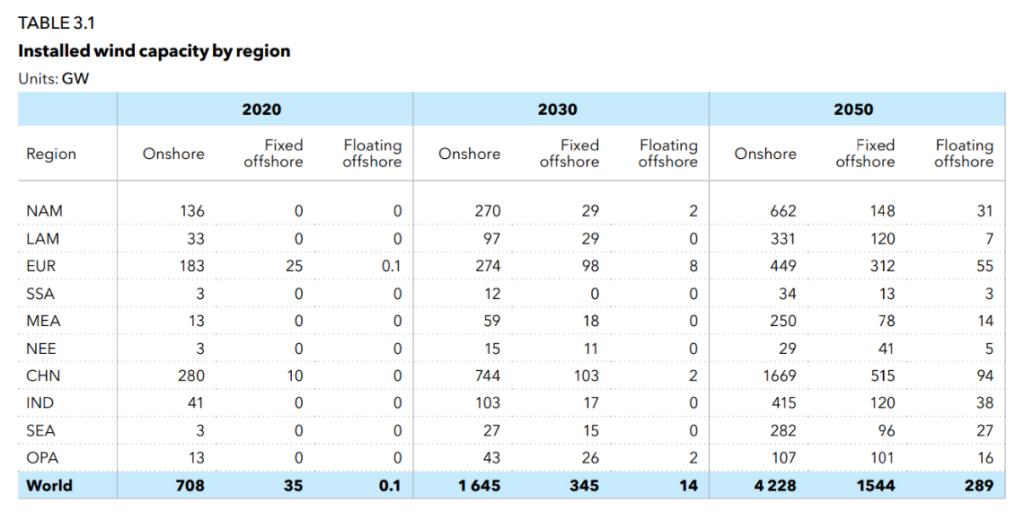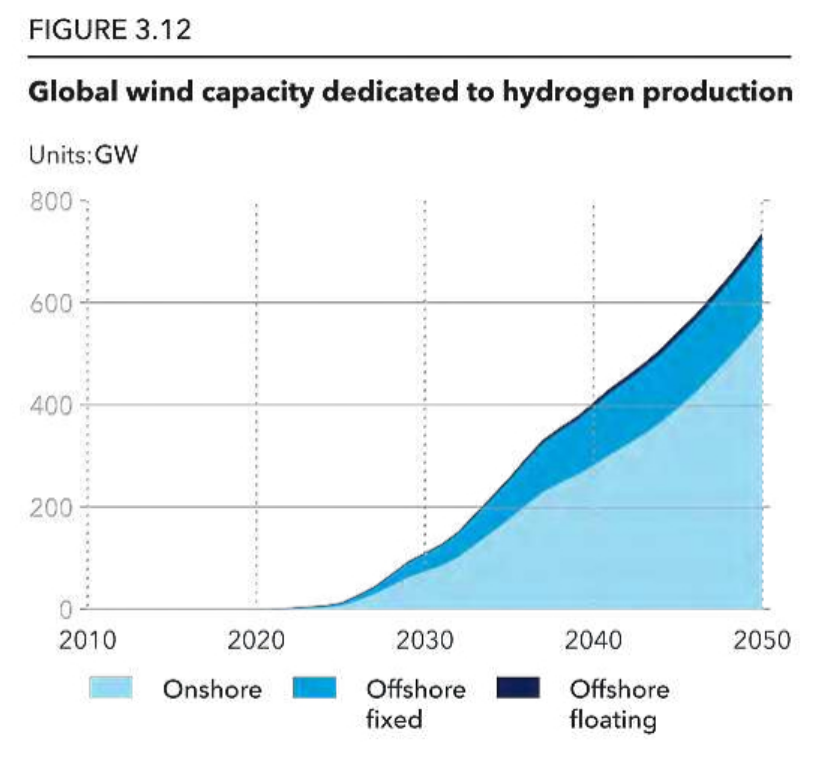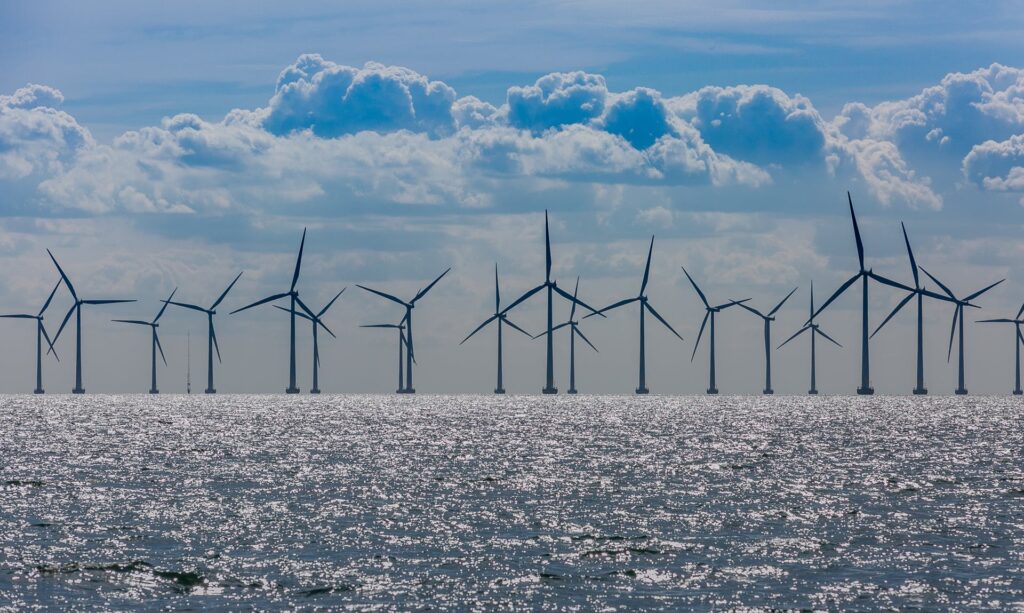Offshore wind capacity could increase 56-fold by 2050, driven by the growing need for decarbonization and energy security, and falling costs, as according to a DNV report, levelized costs for floating and background power are forecast to fall 39% and 84%, respectively.
In its sixth edition of the Energy Transition Outlook, DNV states that offshore wind power records an average annual growth of 13% between 2020 and 2050, and will account for 25% of total grid-connected wind capacity.
In terms of wind technology, onshore wind will increase seven-fold and offshore wind will increase 56-fold (35 GW in 2020), with Europe and the Pacific expected to be the key regions where offshore wind will generate more power than onshore wind.
According to the report, one third of grid-connected electricity supply in 2050 will be wind: 75% from onshore wind, 22% from fixed offshore wind and 3% from floating offshore wind.
On the other hand, the installed capacity of grid-connected wind power, which reached 743 GW in early 2020, is expected to increase to 2 TW in 2030 and 6 TW in 2050. Of these, 1.8 TW will be installed offshore, and 289 GW of that offshore capacity will come from floating wind farms.

You may also be interested in: “Solar installations will increase fivefold by 2038,” according to Rethink Energy
Report details
The factors driving this growth in offshore wind capacity are larger turbines, larger projects, a more dedicated offshore supply chain, as well as increased support for offshore wind construction in countries with limited onshore areas.
The report notes that the mid-century global power system will rely 70% on variable renewable energy sources, while coal (4%) and gas (8%) will decline significantly by then, when they will mainly provide flexibility and support to the power system.
The share of offshore wind in total wind electricity generation (on- and off-grid) will increase to 34% by 2050 and 6% of it will be floating, according to DNV, which says Europe will continue to rank first in terms of the percentage of regional electricity demand supplied by fixed and floating offshore wind.
To reach net zero, DNV says that electricity from wind power will have to rise from 6% of electricity generation in 2020 to 29% in 2050. In this case, onshore wind will have to increase ninefold, while fixed offshore wind in the background will have to increase its share of the electricity generation mix from 0.41% in 2020 to 9%.
From 2040 onwards, 38% of new electricity installations would be offshore wind farms, according to the consultancy’s projections. According to these figures, 3 GW of onshore wind power will be installed for every GW of background fixed offshore wind power between 2020 and 2030, and only 2 GW of onshore wind power for every GW of offshore wind power from 2035 onwards.
Regarding green hydrogen, DNV notes that it will only supply 5% of global energy demand in 2050, and will have a 14% share by 2050. “Hydrogen is an integral part of the net zero strategies being developed by many countries and is urgently needed for the decarbonization of hard-to-eliminate sectors,” the report states.
As for hydrogen production from wind power, DNV sees some 2.3 TW of off-grid wind capacity built for hydrogen production between now and 2050, in addition to grid-connected wind capacity.
According to the report, investments in renewables and on-grid power must increase much faster, and much greater policy intervention than today is needed, as the planet remains on track to warm by 2.2 °C by 2100.

To access the DNV report, click here
Written by Antonio Vilela




